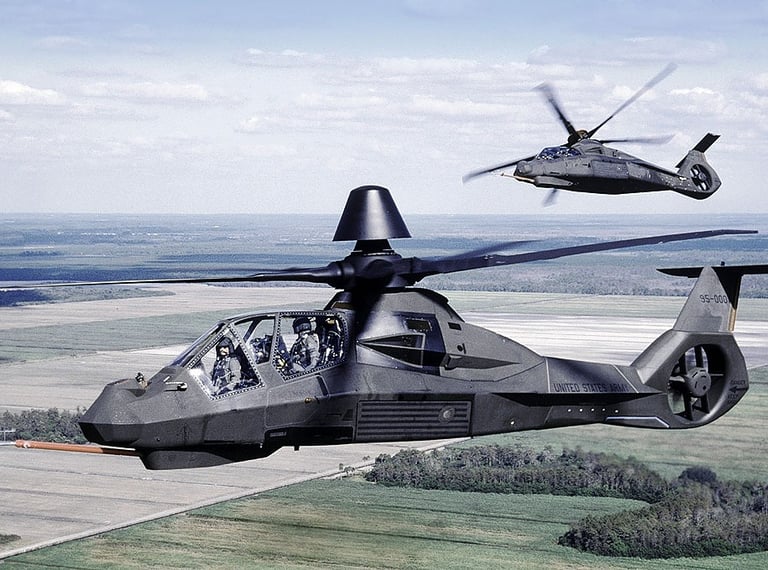RAH-66 Comanche
Fact For 26/6/2021
FACTS
The Boeing–Sikorsky RAH-66 Comanche is an American stealth armed reconnaissance and attack helicopter designed for the United States Army. Following decades of development, during 2004, the RAH-66 program was canceled prior to mass production commencing, by which point nearly US$7 billion had been already spent on the program. Two RAH-66 prototypes were constructed and underwent flight testing between 1996 and 2004. On 23 February 2004, the U.S. Army announced the termination of the Comanche program, stating they had determined that the RAH-66 would require numerous upgrades to be viable on the battlefield and that the service would instead direct the bulk of its rotary systems funds to renovating its existing attack, utility, and reconnaissance helicopters


Design and Specifications


The Comanche was intended to be an advanced armed reconnaissance and attack helicopter. The Comanche was specifically tailored to the role of armed scout to replace the U.S. Army's OH-58D Kiowa Warrior . It was both smaller and lighter than the AH-64 Apache attack helicopter that it had been intended to accompany . The RAH-66 was powered by a pair of LHTEC T800 turboshaft engines, each capable of generating up to 1,563 hp (1,165 kW) of power. The RAH-66's fuselage was 43 feet (13 m) long and composed of composite materials; it was designed to be capable of fitting more readily onto transport ships, enabling the Comanche to be more rapidly deployed to flash points and other rapidly-developing situations
However, in the event of strategic transport assets not being available, the helicopter's ferry range of 1,200 nmi (2,200 km) would have allowed it to fly itself to battlefields overseas on its own . The exterior surfaces of the RAH-66 were faceted and covered with both radar-absorbent material (RAM) coatings and infrared-suppressant paint; as a result of these combined measures, the Comanche's RCS was stated to be 360 times smaller than that of the AH-64 Apache . the Comanche was to be equipped with sophisticated avionics, including navigation and detection systems, which would have enabled operations at night and in inclement weather. Its primary mission was scouting using its advanced sensors, in particular locating and designating targets for attack helicopters, such as the AH-64 Apache, to strike. The Comanche was furnished with a digital fly-by-wire flight control system. Each of the two crew members were to be provided with a pair of LCD multi-functional displays in addition to the Helmet-Integrated Display and Sight System (HIDSS)


For the light attack role, the RAH-66 was to be furnished with various armaments. It was equipped with a single chin-mounted 20 mm three-barrel XM301 rotary cannon, which could be pointed rearwards and retracted under a fairing when not in use to decrease the helicopter's radar cross-section. In addition, the RAH-66 was capable of internally carrying a maximum of six AGM-114 Hellfire air-to-ground missiles or up to twelve AIM-92 Stinger air-to-air missiles, which would be evenly divided between a pair of retractable weapons pylons. Beyond storing munitions internally, the Comanche could also mount external stub wings to carry up to eight Hellfire missiles or sixteen Stinger missiles. However, operations performing with armaments mounted externally would reduce the effectiveness of the Comanche's stealth technologies
Source - Wikipedia
